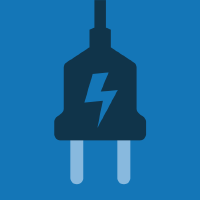Topic Menu
► Topic MenuTopic Editors


Optimal Planning, Integration and Control of Smart Grids and Microgrids Systems
Topic Information
Dear Colleagues,
With the development of renewable energy technology, the penetration of renewable energy sources into the existing power systems is inevitable. With more and more penetration of renewable energy sources, power/energy management becomes critical and challenging for the successful operation of smart grids and microgrid systems. Smart grids include power generation/consumption equipment, power transmission and distribution network and energy storage equipment, integrating sensor measurement technology, network technology, communication technology, automation and intelligent control technology. For efficient and effective control of smart grids and microgrids systems, communication among different entities/devices/agents and associated cyber security is another vital vector.
This research topic aims to collect articles related to the role of the smart grid in integrated energy systems including stochastic renewable energy sources and present important findings to overcome the volatile nature of renewables with the help of energy storage and demand response programs. Areas covered in this Research Topic include, but are not limited to, the following:
- Optimal planning/sizing of microgrids/smart grids;
- Integration and control of renewable energy systems with microgrid systems;
- System integrations through static interfaces;
- Reliability aspects in smart grid systems;
- Storage optimization studies in smart microgrid systems;
- Communications in smart grids for effective control implementations;
- Cyber physical systems in smart/microgrid systems;
- Power quality aspects in smart grid systems with high renewable energy penetrations;
- Virtual inertia systems;
- Operations of grid under fault conditions.
Prof. Dr. Jun Zeng
Dr. Qian Xiao
Prof. Dr. Fei Gao
Prof. Dr. Yiqi Liu
Topic Editors
Keywords
- microgrids
- smart grids
- renewable energy
- distribution network
- power electronic devices
- energy storage system
- power converter
Participating Journals
| Journal Name | Impact Factor | CiteScore | Launched Year | First Decision (median) | APC | |
|---|---|---|---|---|---|---|

Electricity
|
- | - | 2020 | 20.3 Days | CHF 1000 | Submit |

Electronics
|
2.9 | 4.7 | 2012 | 15.6 Days | CHF 2400 | Submit |

Energies
|
3.2 | 5.5 | 2008 | 16.1 Days | CHF 2600 | Submit |

Sensors
|
3.9 | 6.8 | 2001 | 17 Days | CHF 2600 | Submit |

Sustainability
|
3.9 | 5.8 | 2009 | 18.8 Days | CHF 2400 | Submit |

MDPI Topics is cooperating with Preprints.org and has built a direct connection between MDPI journals and Preprints.org. Authors are encouraged to enjoy the benefits by posting a preprint at Preprints.org prior to publication:
- Immediately share your ideas ahead of publication and establish your research priority;
- Protect your idea from being stolen with this time-stamped preprint article;
- Enhance the exposure and impact of your research;
- Receive feedback from your peers in advance;
- Have it indexed in Web of Science (Preprint Citation Index), Google Scholar, Crossref, SHARE, PrePubMed, Scilit and Europe PMC.



